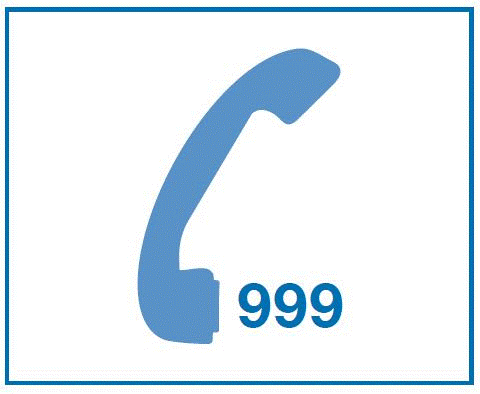If a traffic accident occurs, there are many things that have to be done at once, and there is more involved than merely helping the casualties - warning other drivers, sending for help and protecting the site from further accidents until the emergency services arrive. Never forget the danger of passing traffic.
What to do after a traffic accident
Stop if you are involved in a traffic accident when you are driving or riding any vehicle, including a cycle, even if your vehicle is not damaged.
You must stop, or remain stationary, if the accident involves (a) personal injuries or (b) damage to third partyʼs vehicle, property or animal. You must give your name and address, the name and address of the vehicle owner and the vehicle registration number to any police officer or to anyone (such as the third party involved) who has reasonable grounds for wanting them. If you fail to do this in an accident involving only damage to third party's vehicle, property or animal, or if the accident involves personal injuries, you must report it in person to any police officer or at the nearest police station as soon as reasonably practicable but not later than 24 hours after the accident, unless you are incapable of doing so because of injury.
If any person is killed or injured, or there is serious damage to any vehicle or property in the accident, you or any other person must not move or interfere with any vehicle involved without the permission of a police officer, except to save life, put out a fire or deal with any other emergency.
If the accident only involves slight damage to the vehicles or property without causing personal injury, you may, having discussed with other drivers and the third party involved, move the vehicle to a nearby safe place at the roadside so as not to cause any obstruction to traffic. It is not necessary to report such accident to the police unless there is a need to seek their assistance in handling the accident.
If you or any person received a severe blow in the accident, particularly on the head, see a doctor even if there are no external injuries.
Getting help

Make an emergency call 999 for the police, and request for fire and ambulance services immediately.
Give the following information:
- exact location of the accident;
- number and general condition of casualties;
- number and type of vehicles involved; and
- dangerous goods or fire hazards, if any.
Fire

Fire is one of the dangers following a traffic accident. Put out lighted cigarettes or other fire hazards, switch off your engine and warn others to do the same. Check any leaking from the oil tank if condition allows and it is safe to do so.
If you have a suitable fire extinguisher, make sure you know how to use it.
Dangerous goods
If the accident involves a vehicle containing dangerous goods, keep well away from the vehicle unless you have to approach to save life. Beware of dangerous liquid, dust or vapour concentration.
Look for as much information as possible from labels and other markings and arrange for the police or fire brigade to be told immediately.
First aid

For most people without any first aid training, it is better to do nothing and wait until medical help arrives. However, if further danger threatens, it may be necessary to help an injured person. For advice on what to do, see page 137.
Get some basic training in first aid so you can be of some help to injured people by giving them necessary first aid safely and without causing further risk to the injured.
You can learn first aid from the Hong Kong St. John Ambulance or from the Hong Kong Red Cross First Aid Training Centre.
Carry a clearly marked first aid kit. Keep it in a place, such as a glovebox, where it can be located if needed. It may not be possible to open the boot of a car after an accident.
|
Traffic accidents inside a tunnel If you are involved in a traffic accident inside a tunnel, do not move your vehicle. You should follow the advice for breakdown inside tunnel on page 133. |
|
Traffic accidents ahead  
Warning signs used by emergency services at the site of a traffic accident. Slow down to a speed, slower than normal, at which you can stop quickly and safely. Prepared to stop if signalled to do so and give way to emergency vehicles. |
Help others
When you see a traffic accident and wish to offer help, first consider your own safety and follow the advices on page 135.
Do not leave your vehicle where it could become a hazard to other traffic. Stop at the roadside at a safe distance behind the accident site and where your vehicle can easily be seen. Leave room for emergency vehicles. Use your hazard warning lights. At night you can light the accident site with your headlamps.